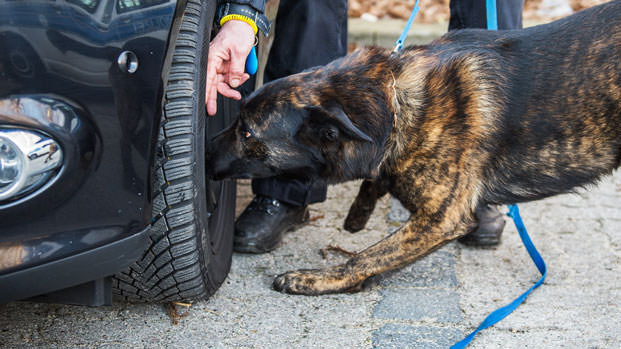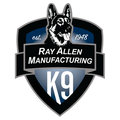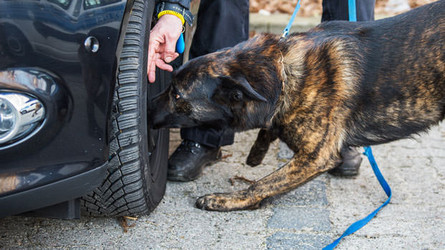Making Dog Training Fun and Educational for Trainer and K9
Jun 15th 2016

by Andrew Weiman
After talking to many handlers around the country it appears that in some cases training has become a necessary evil, a time filler, or to some a waste of time. To them it has become boring, for various reasons; it’s the same old thing, nothing gets accomplished, or they feel that they just do not need it. Handlers then start to find reasons not to come to training, or find reasons to leave early and to not participate in exercises. How did training get this way? You will never find the one and only answer. It is something that just evolves over time and soon takes on a life of its own. I have a suggestion. Let’s not focus on how it became this way but how to change it.
Some people have told me that their training has become a series of tests. A trainer or handler constructs a scenario or challenge to perform. The handler then attempts to accomplish this challenge or scenario to the best of his abilities. If the handler gets to the desired end result that is great. If he does not, then the challenge or scenario is made easier, until the handler and canine reach the desired result. If we stop there and nothing more is done, is this truly training? What have we learned? Did we figure out why the handler and canine did not reach the desired goal? Have we taught the canine and handler anything? Are we likely to improve from this exercise as it is? Probably not!
Since becoming a canine handler, I have been fortunate enough to observe many types of training. Some of the training was the same as my own and some different, but I was always able to find something I could use. I would guess this is truly what training is all about. Watching what others do, exchanging ideas, and understanding what it is that each trainer is trying to accomplish with each exercise. I guess that last part is what I have been focusing on for the last few years. I realized that training was more than just trying to challenge the dog, or trying to see if the dog will fail, or testing the dog each time it is deployed. Training needs to have a specific purpose, a goal if you prefer. Each and every exercise conducted in training needs to have a goal, and should be designed to accomplish this goal.
When the Florida Marlins or any of your favorite sports teams go to practice, I would bet they don’t play a game each and every time. I would guess that they work on the fundamentals of the game, hitting, pitching, fielding, all broken down into their fundamental parts. They then put these pieces together when playing a game. If this technique of improving works, then why do we show up to our practice and play a game each and every time? Why do we only create exercises that simulate a real life test?
To keep training fresh, interesting and focused we need to go beyond the testing each training night. We may need to make at least a portion of training focused on accomplishing a goal. There is a place in training for challenge and testing and we can learn a lot from these exercises, but it should not be the only way we train. The hard part of training this way is deciding what our goals are and creating the exercises necessary to accomplish the goal.
One of the goals in training a canine can be reinforcing or completely conditioning fundamentals. This is necessary no matter what type of training you conduct. The canine needs to be completely conditioned with basic fundamentals. In order to have the canine’s behavior to remain consistent, fundamentals need to be reinforced. We should build into our training various exercises that focus on some of the more important fundamentals or goals. These fundamentals or goals will vary with the desired task of the canine that is being trained. What is considered a basic fundamental in drug training may not be a fundamental for an apprehension canine. Considering what our ultimate goal in training the canine is going to be can lead us to what we need to practice.
One way to get started is to think of some things in your respective canine that need to be improved upon. I know we all have the perfect dog. But even though he or she is perfect and you are perfect, there may be an area where you and your canine are not so perfect. Let’s be honest with ourselves and truly evaluate where our respective weaknesses are and if we don’t see them ourselves, we may need to put the ego down a notch and look to a fellow handler who may offer an area of improvement. We are not perfect nor will we ever be, but we must strive to get closer to it or we will become stagnant and never improve.
Once that elusive area of improvement is found, why not create a series of basic exercises to become better. Possibly the exercises are some basic handler lessons we learned long ago that we have felt we did not need to do any longer or new ideas not yet created. But no matter what the exercise is, if we have a goal and a roadmap that will get us to the destination, training will then have a focus.
As an example of training with a focus let’s look at drug detection or bomb detection. It is crucial that both dogs are reliable. Both need to find the odor desired either drugs or bomb, but also both need to find ONLY the drug or bomb odor desired. An obvious focus is to be sure the dog is able to find drug odor or bomb odor in varying environments. If a canine has a problem with certain environments we may need to revert back to the early days of training and focus on some basic fundamental exercises.
In general, we begin training the canine in a non-distract full environment. As the canine becomes more confident, comfortable and consistent in locating the drug odor in this environment, we change the environment to become more stressful or more distract full. Always creating an exercise the canine can win when working in this environment. This can then progress to more and more complicated, stressful and distracting environments. We will ultimately reach the goal of the canine working in all types of environments and the canine performing the desired task in all of these environments. Realizing that we may need to go back in training to something that seems below the abilities of the canine is the hardest part for handlers to accept.
Another exercise or groups of exercises needs to accomplish the goal of making sure the dog only finds the odor of the drug or bomb. The reasons are clear. Drug detection dogs need to prove their reliability for use as probable cause in court. It is equally important for bomb detection dogs to be reliable. If a bomb detection canine would claim an odor of bomb material was present in a location and it was not, it could cause a great disruption in many people’s lives.
We need to utilize exercises that show that the canine only locates the odor of the desired substance. To do this we must identify odors other than the desired odor that the canine may find. These odors need to be placed in a training environment giving the canine the opportunity to locate these items even though they should not. When the canine does not exhibit a behavior change consistent with the detection of the odor of the substance that he or she is trained to find, we have accomplished a portion of the goal. The more odors we identify and utilize in this fashion the more confident we can be that the canine will only find the odor of the substance that he or she is trained to find. Some people call this proofing.
Another possible goal or focus could be conditioning the canine to be consistent when performing the desired reflex or behavior when locating the odor desired; such as sitting or scratching, whichever response is desired. The ultimate goal is the canine performing the desired reflex at the source of the desired odor. We do not want the desired reflex to occur due to a behavior created by the handler. This is sometimes referred to as cueing. We need the canine to utilize the desired odor and ultimately the source of the desired odor as the reason for performing the reflex. The exercises that would be utilized for these goals appear basic. Handlers may think they are beyond this stage. These things need to be reinforced to keep the canine consistent and reliable. Exercises reinforcing that the canine sits or scratches at the source of the odor need to be conducted. Handlers and trainers need to understand how “Blanks” or controlled negatives could be used for any cueing issues.
Frequently handlers and trainers forget the goals of the exercises that they had originally performed in very early stages of training. One of those is scent recognition. Trainers and handlers utilize various techniques for this goal. The techniques need to accomplish two goals. One is to be sure that the canine can detect the odor of the desired substance and the other is for the handler to be able to observe the behavior change in the canine and recognize it as a consistent behavior the canine performs each and every time it detects the desired odor. This is greatly important in determining the true indication or alert of the canine to the desired odor.
A technique for this may be throws of a scented object into a field allowing the canine to enter on the down wind side and trace the odor to its source. Thus, allowing the handler to recognize the behavior of the canine when he or she encounters the odor. Another option is to plant the odor in a fashion that provides an odor that the canine can detect and trace to its source from a distance.
These ideas are only examples and are not the only ways to accomplish this goal. Utilize your creativity to come up with the best technique for you.
All forms of canine training can be broken down into basics upon which we can focus to be more reliable or more accurate, thus increasing our abilities as a team. Once these basics are performed in a competent way in all environments, we can then combine these basics together in more complicated situations. The training continues. Each step becoming more difficult or complex in nature, so we then can progress to a higher and higher level.
This can not be completed alone. No matter how good a trainer or handler believes they are they can not train a dog completely alone. Others are needed for some practical reasons, such as being a decoy in patrol work or hiding the drugs or bombs in drug work. The theory holds true for tracking, building search, and the list goes on and on. But we should not limit our use of these extra people to only the physical assistance. We all need to understand the theories and principles of canine training. We can then utilize each person’s abilities and creativeness to assist with problems, new ideas, or new solutions to old problems. Each and every handler should take responsibility for making his or her training better, more fun, and educational.
Handlers and trainers alike will be accomplishing something. More handlers will be involved in the training with input and ideas. Since they will be more involved in training it becomes more interesting, fresh and something people want to attend to become better. Once improvement is seen by a handler and trainer they will have a sense of accomplishment. As they improve, the team has more confidence and hopefully more desire to work. During work each team will be more productive and other facets of the law enforcement agency will want to utilize the canine unit more. This will have a snowball effect that can only be beneficial for your canine unit.
Goals set out by each trainer or handler, are going to be unique to their situation. There is not a universal set of goals. We must utilize the knowledge we have to evaluate what our weaknesses are and then create a series of exercises to become better and accomplish our goal. For each handler and dog there will be a different goal, exercise and technique used based on our previous training. What technique we prefer to use does not matter as long as it accomplishes the goal of becoming better and does not create a different problem in the process. Obviously if these objectives weren’t reached we need to change the technique and process.
Training needs to be fun, motivational, and educational for the handler, trainer and canine. Trainers and handlers who identify goals and objectives for training will instill more value in training for everyone. This will provide benefits not seen before in your training. We need to breakaway from blindly following the handlers before us, and evaluate what was done in the past, to begin what needs to be done now, so we can be better prepared for the future.
Andrew Weiman has over 20 years of K9 experience since training his first drug dog with Canadian Customs. Working with a specialty drug investigation unit in south Florida, Detective Weiman has become a leading expert in the field and has overseen the training of a variety of detector dogs.





